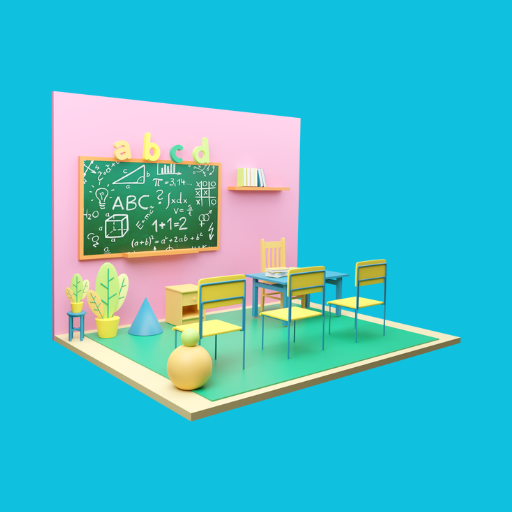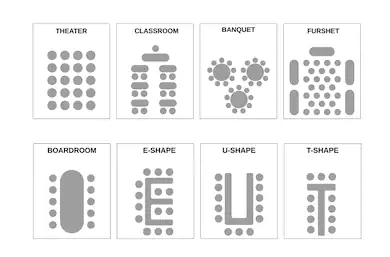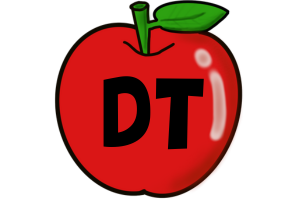The teacher and the students play the biggest roles in the learning process. The content taught in class is important, however, the classroom layout or floor plan is equally important. The distribution of the classroom helps set the mood for learning, promotes discussions between students and the teacher, motivates group activities, increases socialization, and more. It’s vital to establish an adequate classroom layout to help set the mood for learning, promote discussions between students and the teacher, motivate group activities, promote socialization, etc. The simple task of re-arranging the layout of the classroom, not only does it give you more control over the class, but it also encourages a more friendly environment for the students.

Common classroom layout examples
There is not a “best” classroom layout as every setup serves a different purpose. A classroom layout is decided based on the student’s needs, the teaching method or strategy, and the content that wants to be taught. As you can see, a teacher needs to take various elements into consideration in order to arrange the perfect classroom layout for the flow of the class. In this article, we will explore some classroom layouts and their pros and cons.

U-shape or Semi-circle
The main characteristic of the U-shape layout is that the students never face the back of other students and can have a clear view of the class. The desks are arranged in a semi-circle so the
teacher can see each student and provide help efficiently to everyone.
Pros
This particular set-up helps to enhance group discussions, students can see each other well and can see the center of the classroom, or the stage, well. Also, it promotes socialization and face-to-face discussions. The U-shape is perfect for smaller classes that seek to motivate more interaction between students. Another pro is that the teacher can provide one-on-one help as the desk distribution allows easy access to each student. Overall, the U-shape creates an ideal environment to motivate class participation and gives the students a sense of freedom and equality. This setup is ideal for language classes, because it allows students to practice dialogues with each other. On the other hand, it also allows the teacher to present information to everyone or assist specific students that need help.
Cons
It can only work with smaller classes as it can take a lot of space and the desks are not always easy to arrange. This classroom layout can sometimes cause shy students to close, and even more, they can feel intimidated to participate in class.
Variations: Boardroom and T-shape
The boardroom and T-shape are excellent variations of the U-shape. The difference here is that the teacher needs to go around to see what the students are doing. In the T shape classroom layout, the students are also closer to each other which facilitates communication within bigger groups.
Rows
This is what we know as the traditional classroom layout, it’s very common to see this setup in most high schools. Rows are particularly good to enhance individual work and for classes that are more teacher-centered. This layout consists of arranging the desks in rows, one behind the other.
Pros
First of all, it is very easy to use with large groups of students. This distribution is good to use during exams and it promotes individual work. Students are facing the center of the classroom where usually the board is, which means students can have a clear view of the material the teacher presents during the class. It’s perfect for teacher-centered such as math or physics classes as the students are facing towards where the teacher is. When you teach these kinds of subjects, interactions between students are not essential or even undesired.
Cons
It does not promote social interactions, students can be limited to talking with one another as it can be difficult with this classroom layout. The teacher will be typically located at the front of the classroom, this causes the students seated at the back to get distracted and lose focus very easily. Lastly, it’s not easy for the teacher to get a good view of the students seated in the middle and back rows.
Variation: Separated tables
This layout variation is the same as Rows but with space between the tables. This layout is useful during tests or exams to avoid cheating.
Table groups
Another common classroom layout. This layout is common in elementary and primary schools. Table groups, as the name suggests very well, consist of arranging the students in small tables to form groups.
Pros
This classroom layout is perfect for encouraging interaction among students, it promotes socialization. Also, it motivates the students to learn how to work in groups. It’s good for saving and optimizing the space in the classroom. Promotes collaborative learning and it’s perfect for smaller classes. This layout is useful for teaching languages or group work.
Cons
Students can lose focus and get distracted easily. Sometimes it can be challenging for the teacher to manage students’ behavior. Also, it can be hard for some students to get a clear view of the teacher and the board. Classes can be hard to manage and noisy as students as facing each other. Lastly, students have very little space to work.
Variation: Banquet style layout
This variation is identical to the table groups but has round tables, this makes bigger groups possible and students face a central point. This layout is great for teamwork and competitions such as quizzes.
O-shape or Circle
Unlike previous classroom layouts, the O-shape is an uncommon setup. This layout basically consists of arranging the desks in a closed circle leaving a middle space free.
Pros
Enhances class discussions and participation, The students are all facing each other which promotes and facilitates them to interact and socialize. This style is great for class discussions as it distributes the power well, no one is the head of the classroom. It saves a lot of space in the classroom that can be used for other purposes.
Cons
Some students can have a hard time trying to look at the front of the classroom, those who have their backs towards the board and, usually, the teacher. In order to get access to the middle space, it’s necessary to move the desks, which can be a little annoying for some students to have to move their desks all the time. Lastly, the person standing in the middle area will always have his or her back to someone.
Stadium / Auditorium
The stadium classroom layout is commonly seen in seminars or colleges, this layout helps to organize the decks just like a stadium so both the students and the teacher have a clear view of each other.
Pros
The stadium layout allows the teacher to see each student directly, as well, the students can see the teacher and the front of the classroom very well. Promotes group work, interactions, and socialization between students. It helps the students to focus more on the class as they are constantly facing the teacher. It’s perfect to watch videos or presentations of the content given in class.
Cons
It’s difficult to use with large groups of students as they will be too far away from the front of the class. Sometimes it can be challenging for some students to form groups. Lastly, it can be hard for the teacher to manage and control the class, the students seated at the back can get distracted.
Variation: Theater
The theater layout has a stage which is the main difference from the auditorium layout. It is ideal for improv, art, and acting classes. It is also easy for spectators or students to join.
Final thoughts
The classroom layout and your teaching style go hand in hand, they are key elements to enhance the learning process of your students, and overall, to provide a comfortable environment for the student’s development. Every group of students requires a different set-up, they all have different needs and learning styles. A little creativity might be useful to decide which one works best for you, just remember that the key to selecting the best layout is to allow a combination of a teacher-centered class with the active participation of the students. It is also important to remember that classroom layouts do not need to be permanent, you can change the layout depending on the activity.
If you have any other layout ideas, please share them in the comments section.

